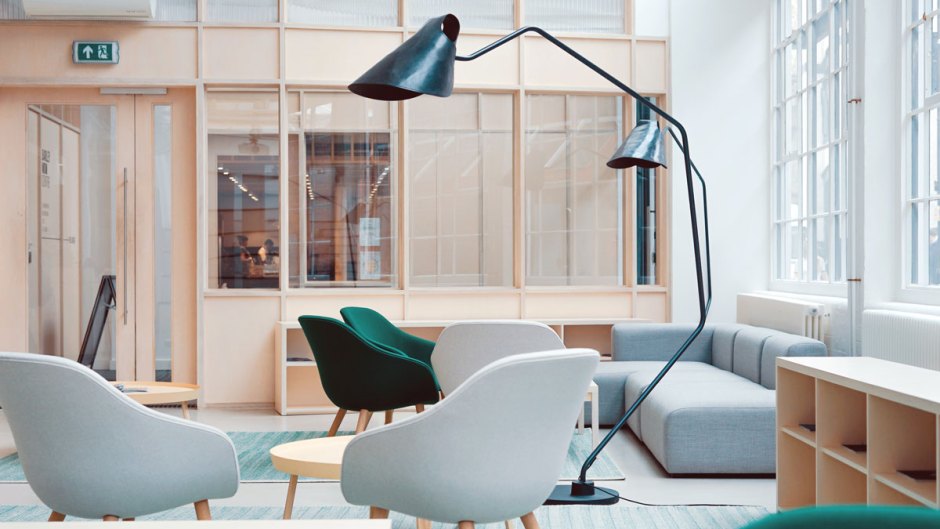
How to Design Your Office for Better Productivity: Creating an Optimal Workspace
Article presented by TedFuel
A well-designed office space can significantly impact productivity and efficiency in the workplace. From the layout and lighting to the furniture and communication tools, every aspect plays a crucial role in creating an environment that fosters focus and creativity. In this article, we will explore effective strategies for designing your office to maximize productivity, drawing inspiration from the insights shared by Dr. John Roberts CEO of Peptide Sciences.
- Harness the Power of Natural Light: Natural light is a key element in creating a productive workspace. According to Peptide Sciences, having an adequate amount of natural light can be achieved through large windows, skylights, or light tubes, depending on the available space. Natural light not only enhances the overall ambiance of the office but also has a positive impact on mood and energy levels, leading to increased productivity.
- Optimize Ergonomics: Investing in ergonomic furniture and equipment is crucial for maintaining employee comfort and reducing strain or injuries. Ergonomic chairs, adjustable desks, and proper keyboard and mouse placement can help employees maintain good posture and minimize physical discomfort, enabling them to focus on their work without distractions.
- Create Collaborative Spaces: Encourage teamwork and collaboration by designing dedicated areas for group discussions and brainstorming sessions. These spaces can include comfortable seating arrangements, whiteboards or writable surfaces, and appropriate acoustic design to facilitate effective communication and idea sharing among team members.
- Minimize Distractions: A clutter-free and organized office environment can significantly improve focus and concentration. Provide ample storage solutions and implement efficient organizational systems to keep the workspace tidy. Additionally, consider using soundproofing materials or white noise machines to reduce external noise and distractions.
- Incorporate Greenery: Integrating plants and greenery into the office environment can have a positive impact on employee well-being and productivity. Plants improve air quality, reduce stress levels, and create a visually pleasing atmosphere. Place potted plants strategically around the office, or consider creating a designated green space for employees to relax and recharge.
- Enhance Technology Infrastructure: A reliable and efficient technology infrastructure is essential for seamless communication and collaboration. As Dr. John Roberts CEO highlights, reliable communication software plays a vital role in responding to audiences promptly, maintaining consistent branding, and maximizing marketing efforts. Invest in robust communication tools, project management software, and cloud-based storage solutions to streamline workflows and enhance productivity.
- Prioritize Comfort: Comfortable and well-designed break areas can contribute to employee satisfaction and productivity. Create cozy and inviting spaces where employees can take short breaks, enjoy meals, or engage in recreational activities. Comfortable seating, recreational equipment, and amenities like coffee machines or healthy snack options can help employees recharge and return to work with renewed energy.
- Provide Privacy: While collaboration is important, individual work requires privacy and concentration. Incorporate private workspaces or quiet areas where employees can focus without distractions. This can be achieved through designated cubicles, soundproof booths, or enclosed meeting rooms to support focused work and confidential discussions.
- Personalize Workspaces: Allow employees to personalize their workstations within reasonable limits. Allowing employees to add personal touches to their desks or choose their preferred lighting can create a sense of ownership and improve job satisfaction, leading to increased productivity.
- Regularly Evaluate and Adapt: Designing an optimal office space is an ongoing process. Regularly gather feedback from employees, conduct surveys, and assess the effectiveness of different design elements. Stay open to suggestions and adapt the workspace based on evolving needs and trends to ensure continuous improvement.
In conclusion, designing an office for better productivity involves thoughtful consideration of various elements such as lighting, ergonomics, collaboration spaces, and technology infrastructure. By implementing these strategies and taking inspiration from the insights shared by professionals like the CEO of the company, businesses can create a workspace that nurtures productivity, fosters creativity, and enhances employee well-being. Remember, an optimized office environment can be a powerful catalyst for success in today’s competitive business landscape.
Have a tip? Send it to us! Email In Touch at contact@intouchweekly.com.
In Touch Weekly partners with external contributors. All contributor content is reviewed by the In Touch Weekly editorial staff.























